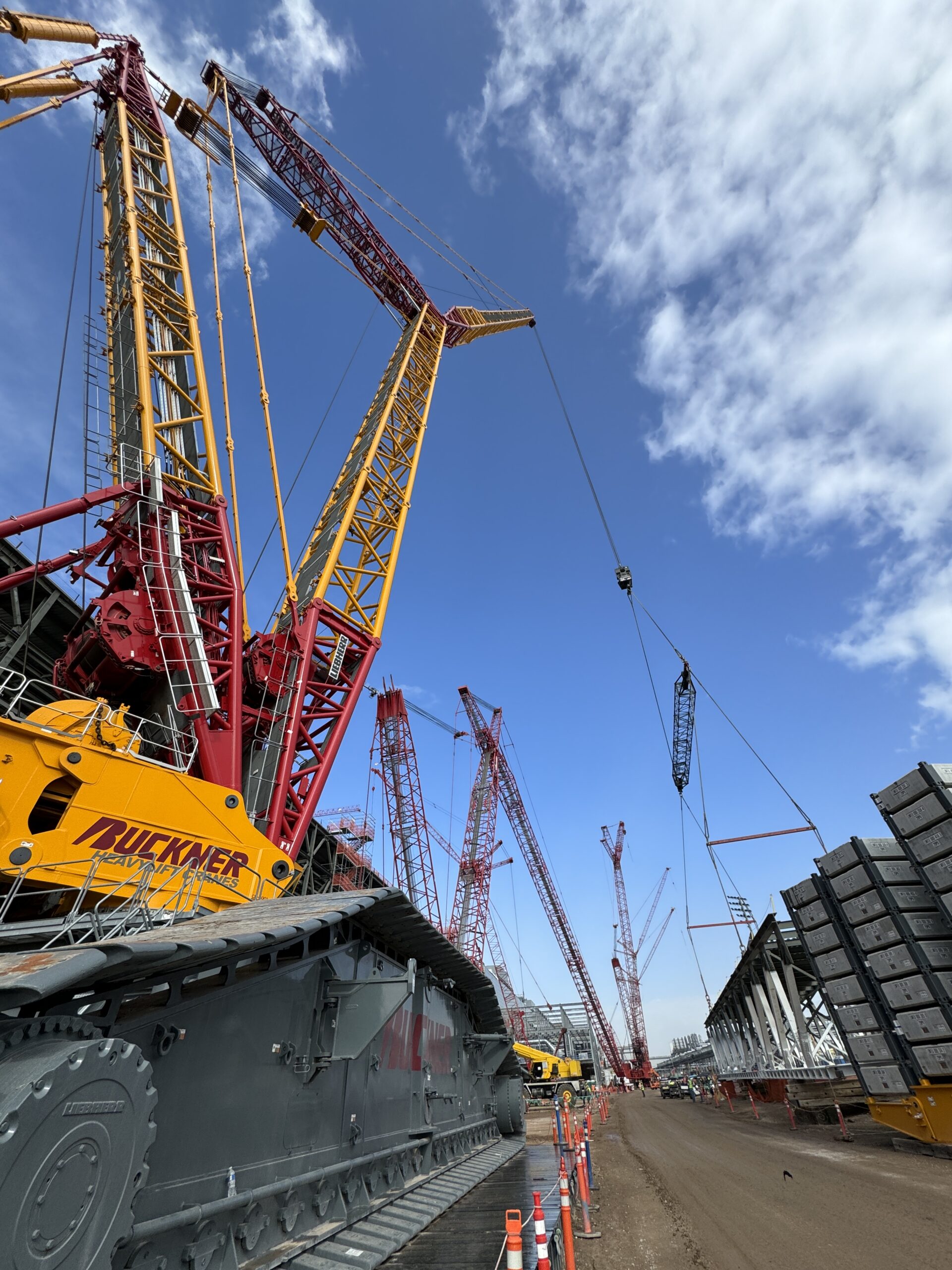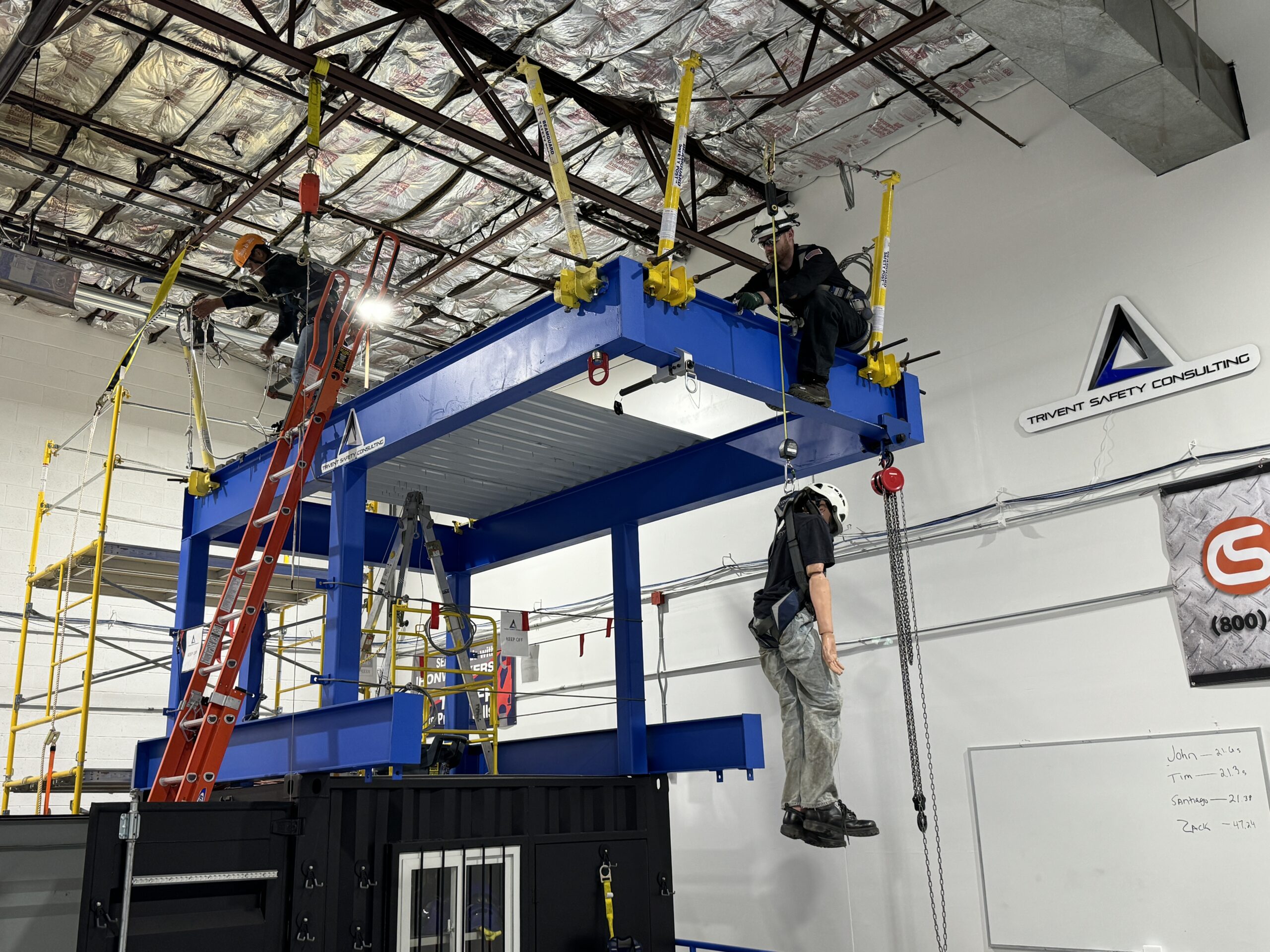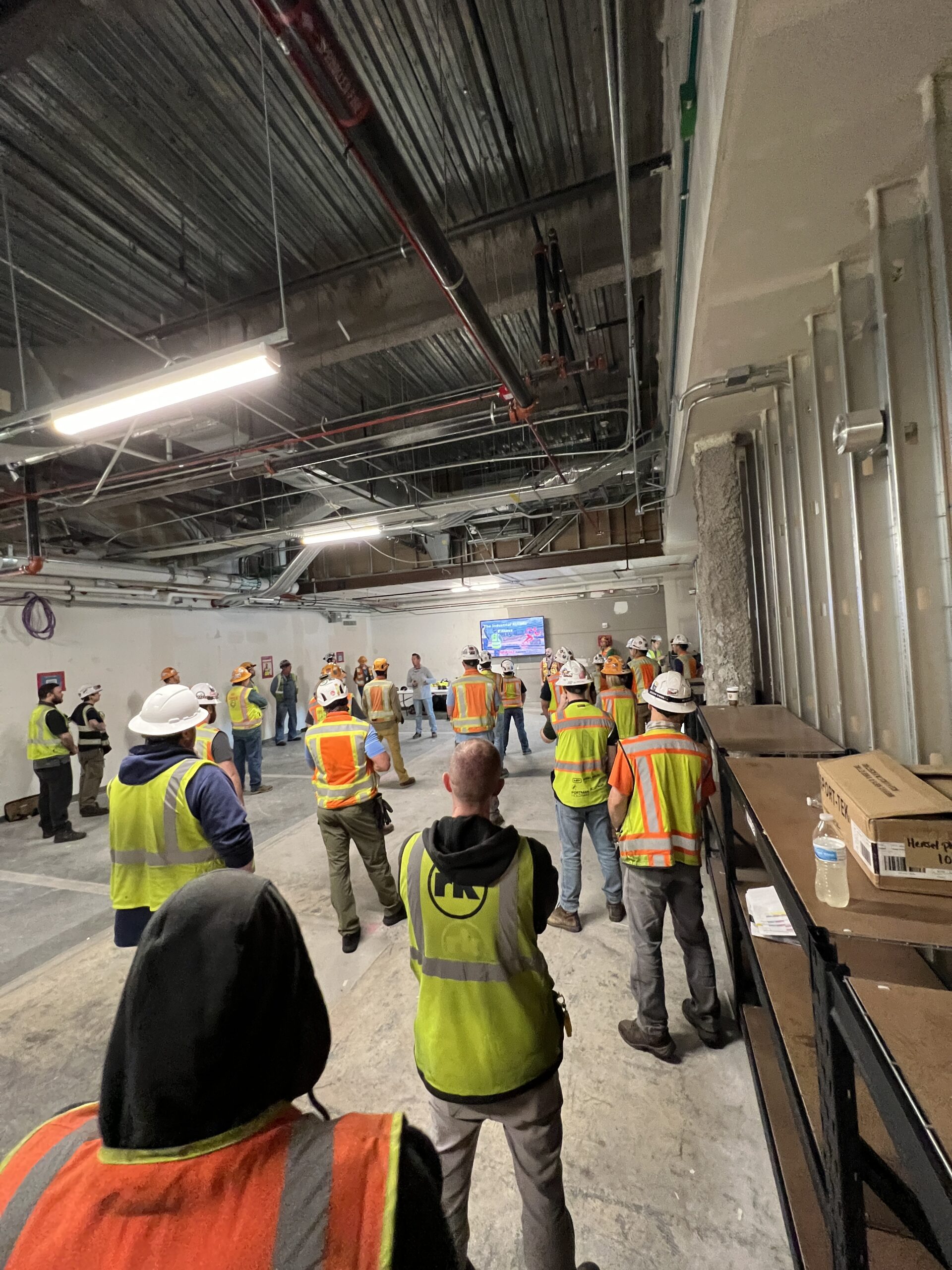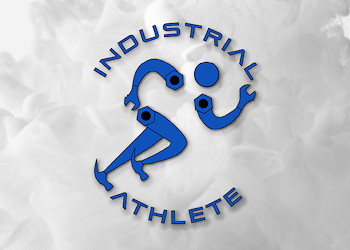If you’ve ever marveled at the impressive sight of a towering crane effortlessly maneuvering heavy loads, you might not be aware of the meticulous planning and coordination required behind the scenes.
Continue readingFall Protection Training at Trivent Safety Consulting’s World-Class Center in Wheat Ridge, Colorado
“we firmly believe in the power of hands-on training. Our fall protection courses feature practical exercises and simulations that allow participants to apply their theoretical knowledge in real-life scenarios.”
Continue readingUnleashing the Inner Athlete: How the Industrial Athlete Program Can Transform Tradespersons’ Performance
Are you ready to tap into your untapped potential and unlock the powerhouse within? We’re about to embark on a journey that will revolutionize the way tradespersons approach their craft. Introducing the Industrial Athlete Program – an extraordinary initiative designed to transform your performance, elevate your skills, and unleash the inner athlete in you. Get ready to take charge of your physical and mental well-being like never before as we dive deep into this groundbreaking program that is set to redefine what it means to be a tradesperson. Whether you’re swinging hammers or operating heavy machinery, this blog post is packed with insights and strategies that will not only enhance your productivity but also empower you to achieve greatness in every aspect of your life. It’s time for a game-changing transformation – let’s unlock the inner athlete together!
The Four Pillars of the Industrial Athlete Program
1. Nutrition
2. Exercise & Stretching (Training)
3. Ergonomics
4. Behavioral Safety (Mindset)
The Industrial Athlete Program is based on the four pillars of training, recovery, nutrition, and mindset. Each pillar is essential to the success of the program and the overall health and performance of the tradesperson.
1. Nutrition: The first pillar of the Industrial Athlete Program is nutrition. This pillar focuses on providing the body with the nutrients it needs to perform at its best. The nutrition component of the program includes Meal Planning Guides that provide tradespeople with information on how to fuel their bodies for optimal performance.
2. Exercise & Stretching: The second pillar of the Industrial Athlete Program is Exercise & Stretching or training. This pillar focuses on developing the physical strength, power, and endurance needed to perform at a high level day in and day out. The training component of the program includes learning to stretch using dynamic and static stretching techniques as well as resistance band exercises to promote strength in the three major areas of concern for tradespersons, shoulders, knees & back.
3. Ergonomics: The third pillar of the Industrial Athlete Program is ergonomics. The ergonomics module educates the tradesman on hot to fit the work to the worker. This module is a continuation of the exercise module in the efforts to educate the workforce on methods to reduce Musculoskeletal disorders (MSD’s). The new technology segment introduces the attendees on equipment designed to assist reduce MSD’s.
4. Behavioral Safety: The fourth pillar of the Industrial Athlete Program is Behavioral Safety or mindset. This pillar focuses on helping tradespeople develop a positive mindset that will allow them to perform at their best mentally and emotionally. The Behavioral Safety module educates the tradesman on brain health. Construction is the number two occupation in the United States for suicide. This module educates the attendees on various coping and support strategies for themselves or coworkers that are going through tough times. The module also covers the differences in employees risk perception and how to view the world through the lens of risk assessment.
The four pillars of the Industrial Athlete Program provide a comprehensive approach to ensure workplace safety and health for workers in all industries. By focusing on these core areas employers can create a positive work environment that encourages productivity and reduces accidents. With proper planning and implementation, the program can help improve worker wellness while providing an effective tool to reduce costs associated with workplace injuries.
- Learn more by visiting our Industrial Athlete Training Course page.
Blog post Author: Bryan McClure
Understanding OSHA’s Weighted Inspection System
In 2015 OSHA moved to a weighted system, which assigned enforcement units (EU’s) to each inspection.
Continue reading5 Reasons You Need Mock OSHA Inspections and Audits
The anxiety of walking around with an OSHA inspector when you don’t know if there are holes in your safety measures is something you should never have to deal with as a safety manager or business owner.
Continue readingFall Protection by the Numbers
Numbers Are An Important Part Of Fall Protection
Have you ever sat through a fall protection class or looked at the standard regulating your industry? There are a lot of numbers and other information thrown at you. To begin, you need to understand where you work and what you do. This will help you determine what OSHA source material you’ll need to review. It will be either 1910 Subpart D for general industry or 1926 Subpart M under the construction standard. Depending on the specific task you’re engaged in, there could be other areas you may need to visit. Are you working on scaffolding in the construction industry, then Subpart L? Maybe a question about steel erection, then Subpart R has some information you could reference. Regardless, numbers are an important part of fall protection. We’re going to focus on the construction industry and the standards that regulate it.
Let’s start with one of the most important number to remember in the construction industry, 6 feet. This number is important specifically because OSHA has designated this as the height an employee on a walking working surface 6’ above the lower level needs to be protected from falling. Additionally, the maximum allowable freefall distance in most instances is also 6’. Protecting your workers can be achieved with several options, the most popular of which are the use of a guard rail system, or personal fall arrest system. Ensure you and your employees are familiar with 6’ and have a plan in place to protect workers at or above this level.
When determining the protective measures, you’re going to use, guardrails are a common and easy choice. If you’re going to use a guard rail system, it must meet several requirements, again more numbers to remember. The top rail must be located at 42” +/- 3”. It must support 200# of an outward downward force. The mid rail must be located directly between the top rail and the walking working surface, typically this is 21” and support 150# of an outward downward force. If you install a toe board, it must be no higher than 1/4” above the walking surface and support 50# of force applied against it. Ensure that your workforce understands the height requirements and the limitations of the system. Although common on most jobsites, remember, they only need to support 200#’s at the most. That number is not very big when you think about an employee potentially falling into or against an installed guard rail on your project.
Another method to protect employees is the use of a restraint or personal fall arrest system (PFAS). This method, when used correctly, should ensure that your employees are never exposed to a fall or protected in the event of an actual fall. With the use of these protective methods, there are all sorts of numbers that we need to ensure our work force understands. Teaching the employee’s, the ABC’s of fall protection is an easy way to help them remember.
The A stands for anchor. In any system, you need to ensure what you are anchoring to, will support you. With this, the OSHA requirements call for one of the following numbers. 1000, 3000, or 5000. These are the minimum anchorage connector breaking strength (per ANSI) depending on your fall protection application. 1000# for restraint, 3000# for work positioning, and 5000# for fall arrest. You can also use an anchor that is designed, installed and used as part of a complete PFAS which maintains a safety factor of at least two, under the supervision of a qualified person.
B is for body support, typically a full body harness. Inspect your harness, you’ll find some more numbers. 310# and 420#. Depending on your equipment, this will be the maximum permitted worker weight able to use this equipment. This difference is typically dependent upon the next part of your ABC’s.
The C is the connector you use. This is the lanyard, retractable, or restraint system you are using to keep you from falling or hitting a lower level. It’s what connects your body support to the anchor. Manufacturers have a wide variety of connecting equipment to use, most are rated at 900#. This is the maximum average arrest force permitted under normal conditions, although OSHA and ANSI both permit the number to be 1800#. Additionally, the connector will have a deceleration distance. That number is 3.5 feet, although ANSI allows for 4’. These numbers are important because they will help determine an appropriate anchor height. You don’t want to go to low and end up hitting something below you.
A complete fall protection program should look at all of these different numbers and consider them when putting together a plan to protect your workers. If you need help understanding the fall protection numbers and standards or want someone to help develop a plan for you, give Trivent Safety Consulting a call (800) 819-6092. We would love to help you set up a plan that works for you and your team.
The Safety Dichotomy
Do you struggle to effectively deliver your safety message on site? Do you find yourself wondering why your message of going home the same way you showed up, not just for yourself, but your loved ones, does not seem to land home? Does it feel like you are just bouncing marbles off the wall sometimes?
Continue readingOSHA Issues Guidance to Inspectors on Silica
Regardless of which exposure control method is used, all construction employers covered by the standard are required to:
Continue readingUnderstanding OSHA’s Weighted Inspection System
In 2015 OSHA moved to a weighted system, which assigned enforcement units (EU’s) to each inspection.
Continue readingHow to Prepare for and Prevent Workplace Violence
Workplace violence is a real problem in America. According to the US Department Of Labor Occupational Safety and Health Administration, around two million Americans are victims of workplace violence every year. And while certain types of jobs are at higher risk—those who exchange money with the public, especially at night; those who work alone; anyone located in a higher crime area, and anyone whose work takes them to other people’s private homes, to name a few—no one is immune from the risk. Workplace violence can manifest in any business organization, and no matter how good a culture your company has, it’s important to be prepared and proactive.
Zero Tolerance
Begin by instituting a zero tolerance policy. This is something you should make clear to every employee as part of the onboarding process, and on a regular basis as well. Make sure everyone in the company knows that any violent incident, including threats of violence, will be dealt with swiftly and severely and will result in the guilty party’s termination. Letting this be known will encourage employees to be mindful of their actions while also helping the company at large to feel more safe and protected as they work.
Employee Training
 One of the most effective ways to counter the threat of workplace violence is with effective employee training. By giving your employees the tools to manage fraught encounters, you’ll be contributing directly toward the safety of your company.
One of the most effective ways to counter the threat of workplace violence is with effective employee training. By giving your employees the tools to manage fraught encounters, you’ll be contributing directly toward the safety of your company.
Of course, your training program should include informing employees of the company’s policies toward threats and violence and making them aware of the consequences of such actions. But there’s more for them to do. Situational awareness can help them learn to recognize potential threats before they manifest, and conflict resolution strategies can help them de-escalate situations and prevent violence before it begins. You can also provide coping strategies for stress and anger, two emotions that often arise in workplaces and have been known to trigger violence.
Security
Clear security measures can help protect your workplace from the threat of violence. There are several steps you can take to help make your company a safer place to work, including:
-
- Limiting the amount of money kept on the premises, if your employees are in a transactional role.
-
- Investing in protective equipment like security cameras and silent alarms.
- Ensure that good exterior lighting is provided, so employees are not walking to their cars in the dark.
If an incident of workplace violence does occur, your priority after securing the safety your people should be to help them through any trauma. Making counseling accessible to your employees after violent incident can help them recover and put it behind them.





